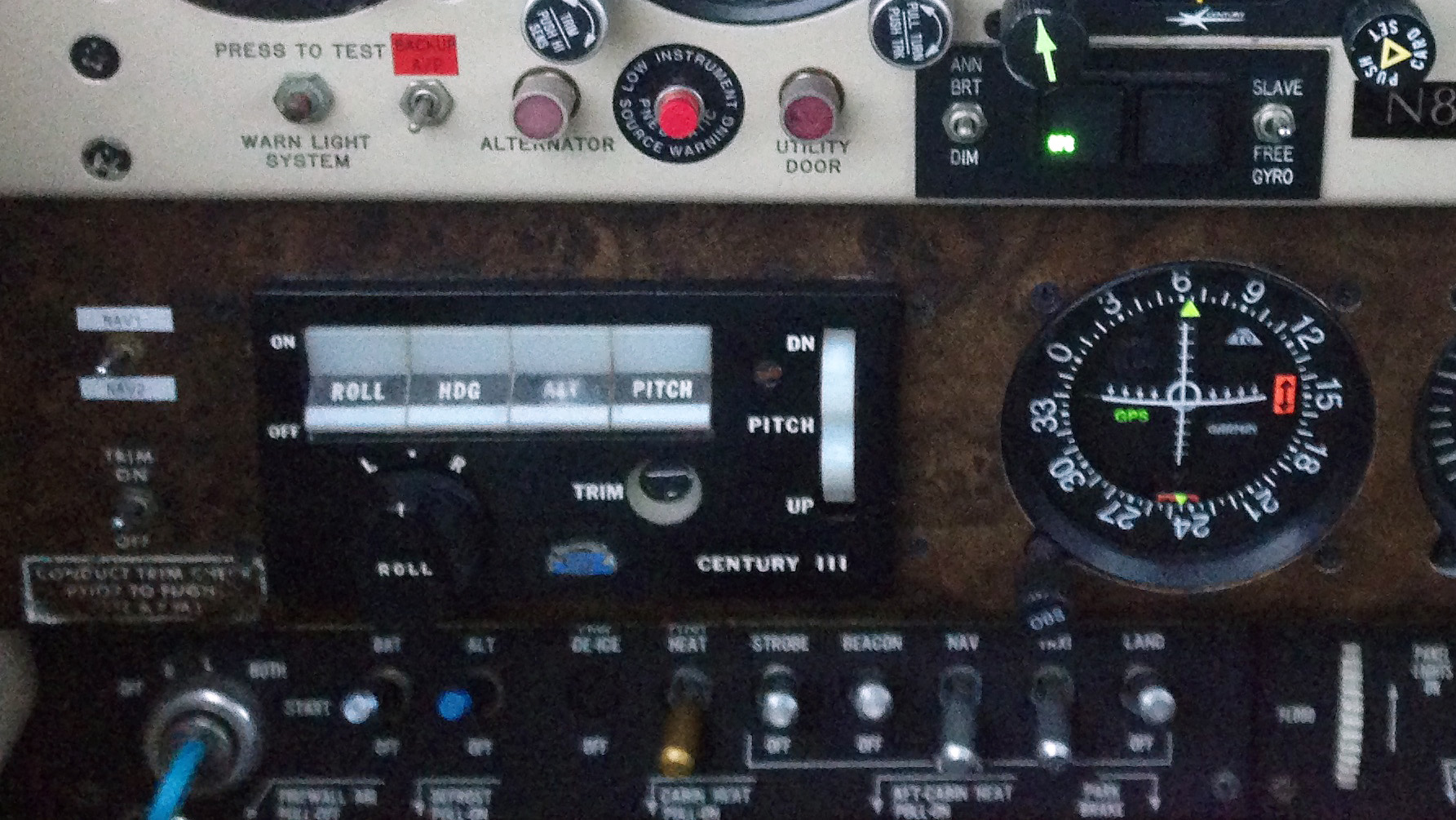Aircraft Maintenance: Avoid autopilot whack-a-mole
Back in the Stone Age when I was flight training, it was rare to get to fly an aircraft equipped with much in the way of avionics.
 Portable GPS had just come out, and I had a Garmin 95XL that seemed magical compared with the dead reckoning that I was required to do on most of my training flights (this is the point in the story where you say “GPS? You had it easy…I only had a compass and had to draw my own charts on papyrus…”). Nevertheless, I was fascinated by the few aircraft I rented that had any semblance of an autopilot in the panel, especially since it seemed every one of them had a big placard marked “INOP,” which really made me want to see what happened if I turned it on. Alas, I never did violate that INOP placard, lest it cause the wings to fall off during my first 10 hours of solo time.
Portable GPS had just come out, and I had a Garmin 95XL that seemed magical compared with the dead reckoning that I was required to do on most of my training flights (this is the point in the story where you say “GPS? You had it easy…I only had a compass and had to draw my own charts on papyrus…”). Nevertheless, I was fascinated by the few aircraft I rented that had any semblance of an autopilot in the panel, especially since it seemed every one of them had a big placard marked “INOP,” which really made me want to see what happened if I turned it on. Alas, I never did violate that INOP placard, lest it cause the wings to fall off during my first 10 hours of solo time.
The point is that, even back then, autopilots seemed to be fickle beasts that couldn’t be easily fixed when something went awry. Considering that it’s now a few decades later and those exact same aircraft are still on the flight line, things haven’t improved much.
When autopilots work, they are a valuable safety tool. However, when they don’t work, the problems can be intermittent and difficult to replicate on the ground. The challenge is usually diagnosing the issue, not fixing it.
Before we talk about what to do if your autopilot is acting up, let’s talk about what not to do. Here is the first commandment of autopilot maintenance: Thou shalt not randomly overhaul components. If your A&P thinks it “might” be the computer, servo, etc., don’t just pull the component and send it for overhaul. Chances are more likely than not that this experiment will be followed by another and another until the root cause is found (or not found) thousands of dollars later.
Instead, start from the outside and work your way in when evaluating the system and only go as far as the expertise that the maintenance can support. For example: If one of the squawks during your annual inspection at a general maintenance shop is an autopilot problem, start by checking the aircraft itself for proper rigging and control movement friction that is within spec for the aircraft. Then make sure that the autopilot has proper and consistent power/ground connections and that all accessible connectors are clean and secure, and make good contact at all pins. I once had an intermittent autopilot trim problem that turned out to be a failing circuit breaker. Issues outside of the autopilot itself are surprisingly common.
There are a few cases where it does make sense to have your local A&P work on an autopilot, but those are rare. For example, autopilot trim switches on the yoke are a common failure point and are extremely expensive to replace. However, they can be removed, cleaned, inspected, and sometimes repaired in the field. Many of these switches cost exorbitant amounts from the manufacturer, yet they are made up of commonly available microswitches that could be considered “standard parts.” In one case, the “guts” of the trim switch was made up of a stack of three standard microswitches. The complete electronic portion of the switch was replaced for about $21 compared with over $1,200 for a new one. That’s a lot of avgas.
Once you’ve ensured that everything outside of the electronics of the autopilot is OK, it’s time to go straight to an expert. If you have a complex or intermittent issue, do not pass go, do not collect $200, and do not let just any random avionics shop work on your autopilot. Start with someone who is an expert in working on your specific autopilot, even if that means traveling to get to a shop in another state. It’s critical to take the entire aircraft to the expert shop to be evaluated and repaired. Autopilots are “systems” and everything needs to be evaluated as a whole in order to have the best chance of diagnosing and repairing a challenging issue. The effort will pay for itself tenfold. In some cases, it even pays to take the aircraft to the manufacturer or a specialty facility such as Autopilots Central in Tulsa, Oklahoma.
Case in point: When I purchased my airplane, the sales agreement included a term where I had to accept that the autopilot had a known, intermittent pitch-over issue that the previous owner had not been able to fix. I reviewed the logs and saw that the issue had been around for almost six years and that a myriad of components had been “overhauled” and reinstalled (some more than once), yet the problem persisted. After purchasing the airplane, but before taking it home, I took the airplane back to the autopilot manufacturer, Century Flight Systems in Mineral Wells, Texas. Two days and $1,200 later everything was fixed for good.
These are only a few tips regarding autopilot maintenance, but hopefully they will help someone avoid a long, painful, expensive process of “avionics whack-a-mole” that ultimately only whacks the aircraft owner. Happy flying!



